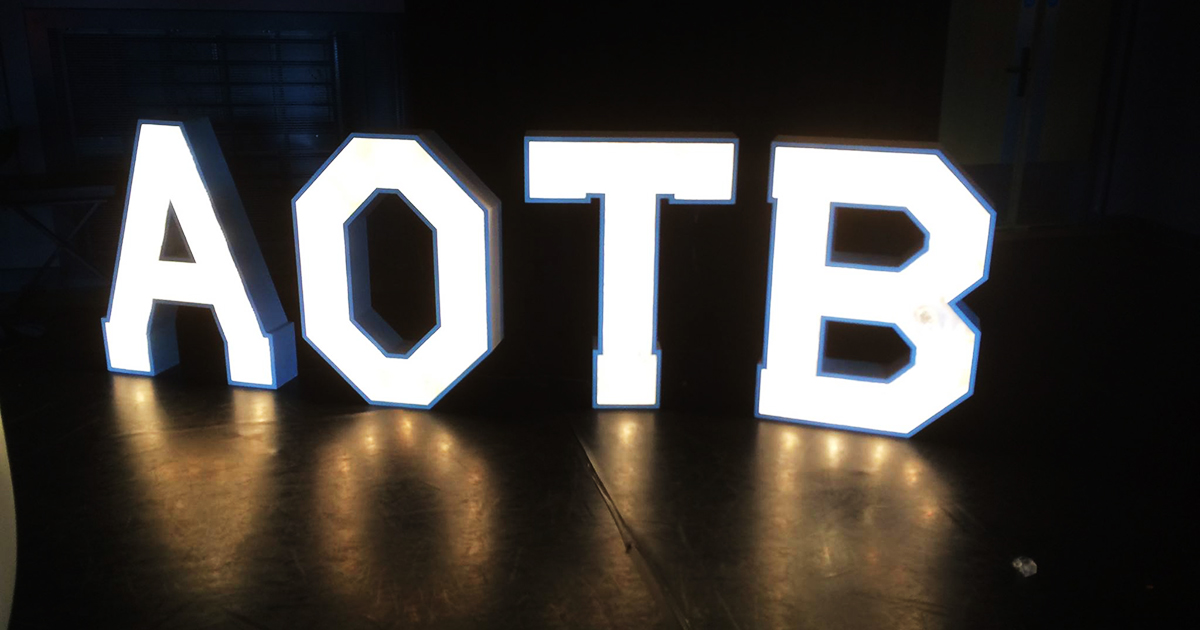For weeks, I’ve been telling people I’m going to a copywriting conference with a couple of colleagues. “A conference for copywriting? I never knew that was a thing,” one said.
“I didn’t know they held events for copyright lawyers,” added another (clearly confused about my general line of work).
To be honest, I had little idea what to expect myself.
My first surprise was to be surrounded by quite so many B2C copywriters – sometimes I forget how niche B2B technology is in the writing world. But even so, Katy, Ben and I left with five key takeaways which are highly relevant to any area of copywriting.
Lesson 1 – The tiniest detail can make the biggest difference
In copywriting, detail can be the difference between revenue-generating copy and the chaff that fills the ether – you know the stuff. But to tackle it, copywriter and trainer Amy Harrison says you need to address the story, not the copy.
As consumers, we’re often bombarded by marketing that says a lot, but just doesn’t speak to us a customer. In essence, brands are telling us what they think we want, instead of listening to what we actually want.
So, regardless of whether you’re B2B, or B2C, writing genuine and original copy will go a long way towards converting prospects to customers.
Lesson 2 – Copywriting can be a science
Or more precisely, a form of psychology. The second talk of the day was presented by Sarah Richards, and in The Science of Ordinary Words she highlighted some copywriting concepts that wouldn’t be out of place in a psychology textbook. But in practice, they can make copy more compelling to the reader, and easier to read.
We generally read copy from left to right, and we also scan copy to pick out key words that give us the gist of a sentence or paragraph. See, you’re probably doing it now. And if I were to plant a random word here – bananas – scanning eyes would pick up on this as a key word, and make you think you’ve missed something important that connects this word, so you go back to the last point the copy made sense. Pretty cool, huh?
For copywriters, this is really powerful stuff. If executed well, you can lead readers through a piece of text, exactly as you want it to be read, by using trigger words strategically placed throughout (as if we needed an excuse to get more nerdy and pedantic about copy).
Simply, for something to be easy to read, it needs to make sense and have a logical flow. It sounds obvious, but there’s plenty of copy out there that doesn’t fit this brief, and will most likely confuse its readers early on, and turn them off.
Lesson 3 – Pitching takes practice
As our very own David McGuire said in his opening speech, “copywriters are an introverted lot” (his words, not mine). So naturally, our default comfort zone isn’t pitching or giving a presentation – in fact, I think most of my colleagues would rather chain-write a week’s worth of white papers on hydraulic pumps than put themselves in that situation.
[Hey! There’s nothing wrong with hydraulic pumps. – DM]
Maybe that’s a little harsh, but public speaking doesn’t come natural to us writer-types, and I include myself in that.
But after Sasha Damjanovski’s session Pitch Me Perfect, I’ve realised that pitching and presentations mostly rely on practice. That and a shed-load of preparation beforehand.
Lesson 4 – Never tell your clients what you really think
It may seem obvious, but this is a really important point. Richard Owsley’s whirlwind lightning talk was hilarious and well-pitched in even measure, but had a serious underlying point to make: no matter what the project, the client is always right (even if you think otherwise).
Telling your clients what you really think is never advised – and let’s be honest, they’re paying you to do a good job, so if you’ve failed to meet expectations, you’ve only got yourself to blame.
Of course, you’re never going to simply roll over when a client comes back with a mountain of amends, but if the feedback is along the lines of, “this isn’t what we envisaged at the start”, then this should ring alarm bells for future projects, to make sure expectations on both sides are clearly set out from the start.
Lesson 5 – A healthy appreciation of Viz is a good thing
I joined Radix in 2016, and finally, finally, I’ve got the opportunity to talk about the “popular” cult magazine and all-round hilarious smut-fest, Viz.
(I say “popular” because according to Nick Parker – copywriter, strategist and former Viz writer – it’s had one of the most turbulent circulation records of any magazine going. Its vulgar use of profanity and vulgarity to get laughs could have something to do with this, but for me, that’s a plus.)
Joking aside, Nick made some really important points about copywriting as a whole, and ultimately, how we need to take our responsibilities as copywriters more seriously, i.e. don’t scoff at someone who doesn’t understand what we do, but instead, teach people the true value of great copy – and how there’s so much more to it than just wordsmithing.
Conclusion – sorry, robots: we’ll be in a job for a while yet
As it becomes increasingly challenging for brands to differentiate themselves from the competition, good quality copy is becoming more sought after, and harder to find.
So as long as we keep providing clients with great writing– and are clear about just how much it takes to make that happen – the demand for copywriters won’t be going anywhere soon.
If you’d like to stay updated about how we implement these lessons – or to receive monthly tips on B2B copywriting and content – you can do that here.



